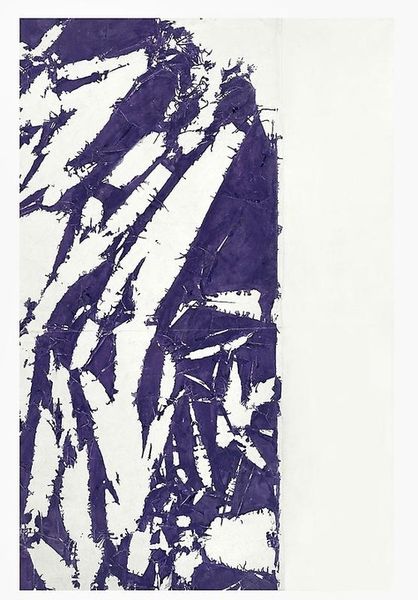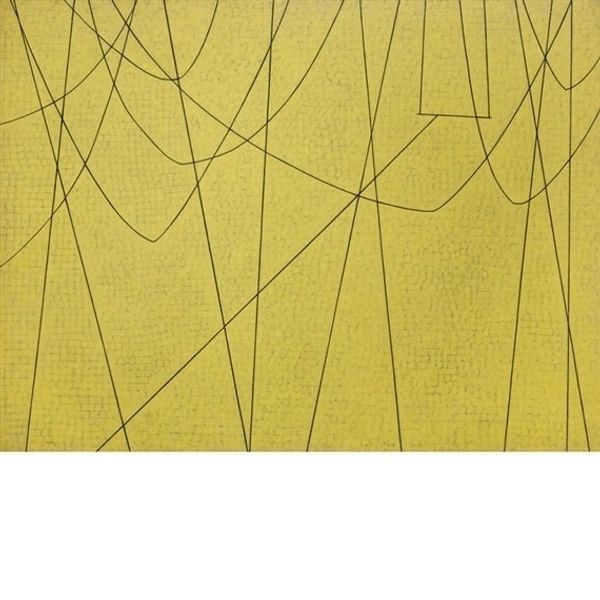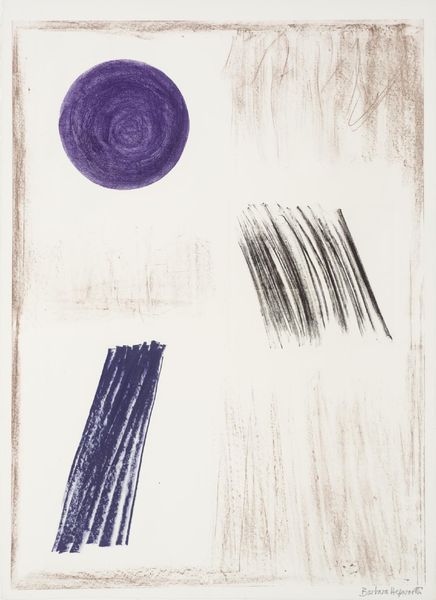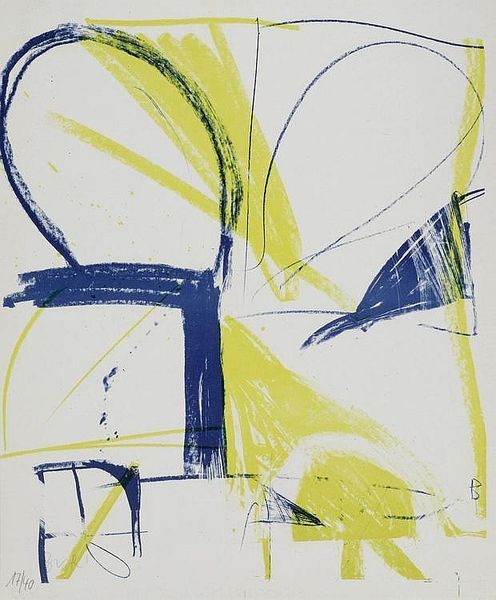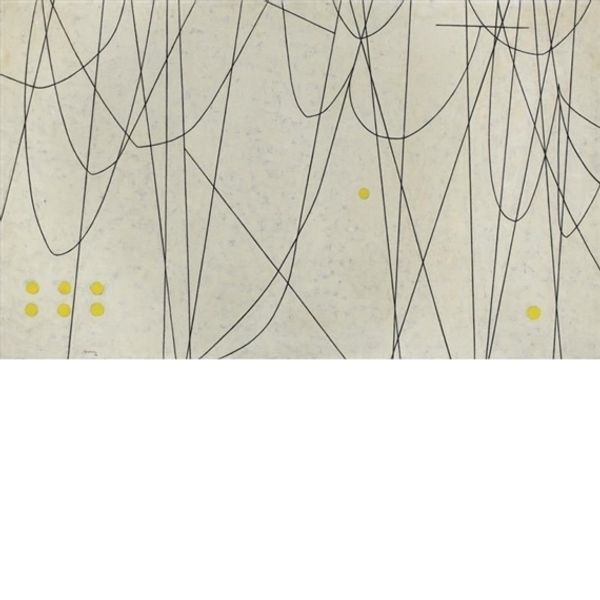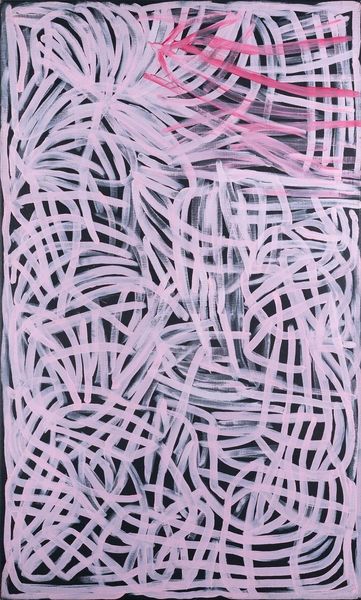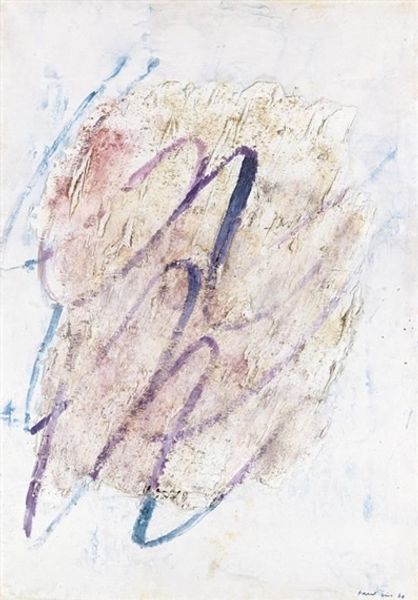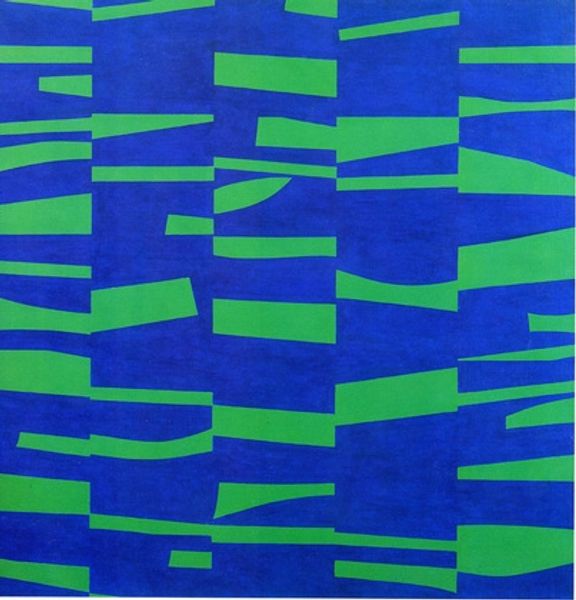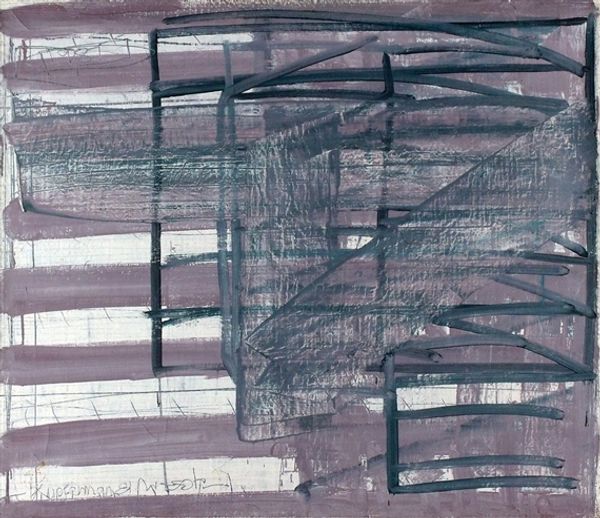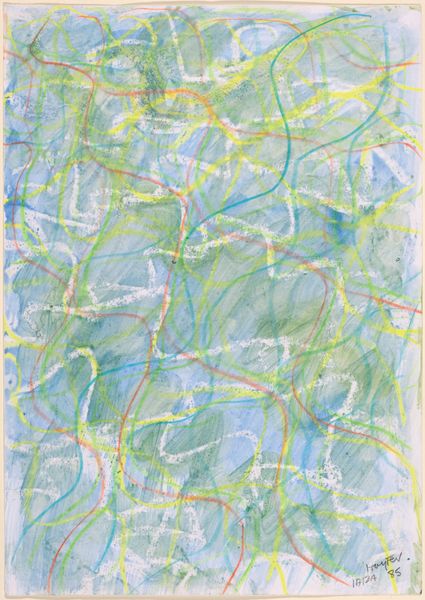
print, linocut
#
organic
# print
#
linocut
#
pattern
#
linocut print
#
organic pattern
#
geometric
#
abstract-art
#
abstract art
#
modernism
Copyright: Gunther Forg,Fair Use
Curator: Here we have "Pariser Serie," a linocut print crafted by Gunther Forg in 2000. The work presents a fascinating interplay between geometric and organic forms, rendered in a striking purple and cream color palette. Editor: My immediate reaction is that there's a beautiful tension at play. The severe lines of the solid yellow field sharply contrast with the chaotic looping figures set against the brushstroke ground. Curator: It’s interesting you note that contrast. Forg, emerging from a lineage of artists engaged in the visual culture after the war, always played with clean lines juxtaposed against raw execution, forcing viewers to consider context and process as one. Editor: Absolutely. The circles, or linked rings if you will, appear almost as archetypes. It could be read as cycles or a binding between disparate forms and the underlying textures hinting towards underlying tensions. What meaning was Forg intending to transmit through these shapes? Curator: In examining the artist’s work and his exhibition history, the pattern may be inspired by Paris’ urban structure, reflecting Forg’s own interpretation of this city, moving away from traditionally beautiful subject matters that came before. It is a deliberate disruption, a comment on how space is experienced and visually consumed. Editor: That does explain some of its emotional resonance, but looking at the linocut, I still feel the resonance of something ancient, like markings on cave walls or old languages struggling to represent primal ideas. The patterns give a hint of an established order fighting to retain stability against encroaching change. Curator: That’s a rich reading. His contribution definitely sparked debates. The modernist tradition against raw abstract, disrupting the viewing experience to a wide variety of viewers and museums that exhibited him, as many institutions favored a more ‘polished’ presentation. Editor: And in that friction, in that constant negotiation between symbol and material, history and modernity, the artwork finds its lasting strength. Curator: It reflects a certain political view of his practice in art world in which, even abstract mark-making reflects the historical framework from which it sprung. Editor: And, through our own lenses, we can hopefully keep these discussions evolving to find and give new significance through the ages.
Comments
No comments
Be the first to comment and join the conversation on the ultimate creative platform.
